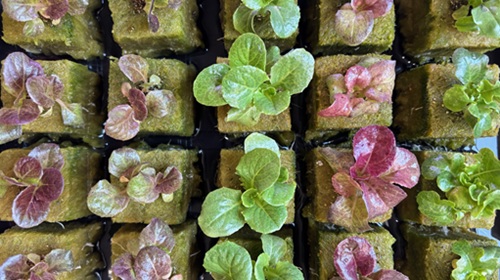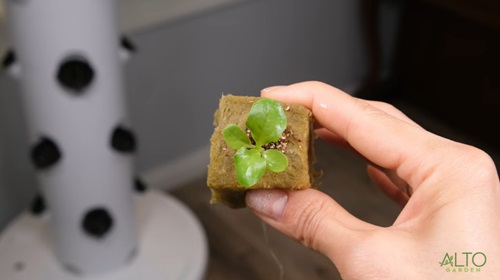Jul 28th 2025
Hydroponic Seed Germination: A Beginner's Step-by-Step Guide
Hydroponics is a fast-growing gardening technique that enables plants to flourish without soil. Compared to conventional soil-based gardening, hydroponics offers several benefits, such as increased yields, quicker growth rates, and more control over plant development, by employing nutrient-rich water as a growing medium.
However, hydroponics necessitates paying close attention to seed germination. The success of the complete hydroponic farming system can be significantly impacted by this important initial stage. Everything from seed selection to transplanting will be covered in this article's thorough guide on hydroponic seed germination.
How to Successfully Start Hydroponic Seeds?
Seed Selection
Seeds are not all made equal. Consider the following while choosing seeds for hydroponics:
- Get premium seeds from a reliable supplier.
- You will have the highest chance of success if you purchase high-quality seeds that complement your goal and growing environment.
- Regular seeds (male and female) and feminized seeds (all female) are the two main categories of seeds.
Soak to Test Hydroponic Seeds
The plant embryo inside the seed gradually shrivels as the seed ages because it loses water in its cells, yet many seeds stay viable for years. To check the viability of you seeds, soak older seeds in a dish of room-temperature water for the whole night to give them a boost and get rid of any duds. They won't sprout if they float after soaking. The seeds that sink to the bottom are prepared for sprouting because they have absorbed water.

Germination Methods
The process of starting seedlings for hydroponics is really simple. In general, you will simply utilize any standard germination technique—aside from soil-based methods—when it comes to hydroponic seeds.
It all boils down to selecting the appropriate inert medium to sow the seeds in, which will later sprout. For hydroponic seed sprouting, three primary inert growth media are utilized: peat and perlite, coconut coir, and rockwool. Let's examine each in brief.
Rockwool
- To moisten the rockwool cubes, soak them in water for 10 minutes or so.
- Insert the seeds into the tiny holes in the rockwool. If necessary, you may easily use a pencil or toothpick to enlarge the holes a little.
- Cover the hole where you sowed the seed with some vermiculite. This will help retain moisture and keep the light out.
- Place the cubes of rockwool in a germination tray.
- Cover the seed tray with plastic wrap or a humidity dome after adding water to allow the cubes to absorb it. Once the seeds start to sprout, move them under a good germination light.
Coconut Coir
- Fill a seed tray with warm water and coconut coir pellets.
- Give the coconut coir pellets an hour or so to absorb the water until they are completely saturated.
- After planting your seeds in the coconut coir pellets, seal the hole with a pinch to keep out light.
- Cover the seeds with plastic wrap or a humidity dome, and remember to water them daily.
Peat and Perlite
- Combine two parts peat and one part perlite.
- Fill the individual cells of a seed starting tray approximately three-quarters of the way to the top with the mixture.
- Fill the seed tray with water until the bottom begins to drain. After letting the water soak into the peat and perlite mixture for approximately an hour, drain the remaining water.
- One seed should be placed in each cell, about half an inch below the surface, and the mixture should be carefully covered.
Transplanting Seedlings
It's time to move your seedlings into your hydroponic system when you see the following signs:
- Two “true” leaves have formed – the first two “leaves” you see are not actually leaves. They are called cotyledons which are parts of the seed embryo. Wait for two more leaves to appear (four “leaves” total).
- Roots are emerging from the bottom of the growing medium.
A net pot, a little plastic container that houses the plant with its growth media, can be used to transfer your seedlings into. The net pot can then be placed into the hydroponic system. Be sure to fully insert the net pot, so that it receives proper watering.

Direct Seeding
Planting the seeds straight into the hydroponic growth medium is known as "direct seeding." Larger seeds, including those from cucumbers, beans, and peas, work best using this technique. First, insert the seed into a tiny hole you have made in the growth medium. Water the area thoroughly and cover the seed with a tiny quantity of growth material. As the seedling emerges, keep the growth media moist.
Final Thoughts
An inert medium, a germination tray, and a little commitment are all you need to start hydroponic seedlings. Though it may seem challenging, especially for beginners, starting seeds for hydroponics is simple once you know how it works. Enjoy the advantages of hydroponically growing and a robust crop by following this guide.




